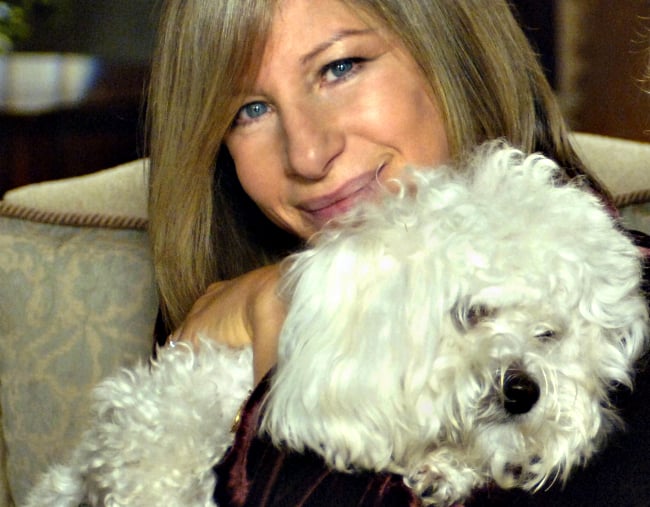
Barbra Streisand and her beloved dog Sammie spent 14 wonderful years together before the Coton de Tulear sadly passed away in 2017.
If the Academy Award-winning actress’ Instagram feed is anything to go by, the two shared lots of fun memories together.
Often seen on her mum’s hip, Sammie went everywhere Streisand did.
Streisand now has three dogs, two of which she cloned from Sammie.
Yes, Barbra Streisand cloned her dog.
